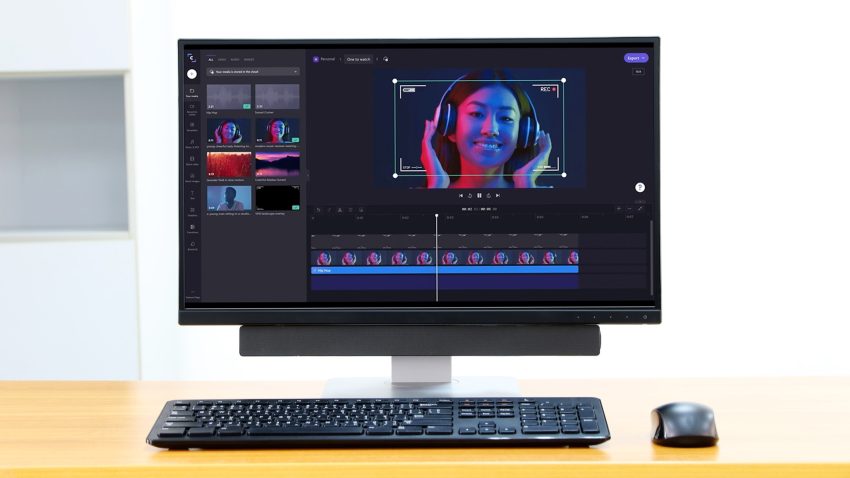Windows 11’s new Media Player plays both video and sound, and it replaces Furrow completely for the last option. In the event that you’re running Windows 11 and haven’t seen the new Media Player application yet, keep it together. It’s arriving in an update. In the mean time, Microsoft keeps on offering the Films and television application, which additionally plays video and administrations the film and Network program content accessible in the Microsoft Store. These two applications aren’t your main choices for media players in Windows, and honestly, knowing which one you want can befuddle. Relax! We’ll let you know here which applications you want for various purposes and afterward offer a profound gander at the new Media Player application.
Step by step instructions to Get the New Windows 11 Media Player
The new Media Player application showed up between the large yearly Windows “include refreshes” — those with names like 22H2. It’s a continuation of Microsoft’s one-time guarantee that Windows has turned into a help as opposed to a set form of programming. I’m supportive of that. It additionally implies that a few clients get the update before others, so on the off chance that you’re actually seeing Notch, give it some time.
You won’t find Microsoft’s new Media Player recorded among the applications in the Microsoft Store — it right now actually shows up as Section there. A few destinations have revealed that you can get the new application by refreshing that store passage, however it showed up in my framework as a component of a standard Windows update.
Presenting Windows’ Three (or Four) Media Players
Media players remembered for Windows have taken many structures throughout the long term. The essential Windows Media Player has been around in some structure starting around 1991. The Films and television application, additionally accessible in Windows 11, allows you to watch recordings put away locally or online also as shows you can purchase or lease in the Microsoft Store. Groove — which is being supplanted — plays music put away locally or in the cloud. The drained looking Windows Media Player that accompanied Windows 7 has been staying nearby in Windows for over 10 years… what’s more, it’s accessible in Windows 11, as well.
In the new plan of things, assuming you type “Notch” into the Windows search box, the new Media Player springs up, and on the off chance that you type “Windows Media Player,” the old one presents itself. Truth be told, Windows 11 incorporates three applications (four assuming you count Notch before it gets supplanted) that play video documents and two that play sound. The applications vary by they way you’d utilize them, nonetheless.
The accompanying table ought to assist you with figuring out the few different covering media players in Windows.
Playing Music in Windows 11’s New Media Player
As referenced, the new Media Player application isn’t in the Microsoft Store. The best way to get it is by refreshing Windows. When it shows up, Depression will be gone, and any playlists you had in that application will presently appear in Media Player.
Welcome to the New Point of interaction
The new Media Player application sports five mode buttons under a hunt box: Home, Music, Video, Play Line, and Playlists. The Landing page shows any as of late played media. The buttons’ capabilities are genuinely self-evident, yet you can extend them into menu choices with the three-line cheeseburger menu at the top — assuming you enlarge the application’s window, these menus grow, as well.
In the Home view, you can open explicit media records as well as urls for streaming media. This works for both video transfers (here’s an example(Opens in another window)) and sound streams. It’s not, nonetheless, for web based YouTube or Vimeo recordings (you can do that in CyberLink’s PowerDVD(Opens in another window)). See the Streaming Music and Radio segment beneath for more on streaming sound in Media Player.
What Configurations Does the New Media Player Support?
The new player upholds all standard sound record designs — including lossless FLAC and open-source designs like Ogg Vorbis. I was additionally ready to play both 5.1 and 7.1 encompass sound examples.
The most effective method to Add Music to the Media Player
You don’t open sound documents in the Music segment, however you can in the Home area. All things considered, here you advise the application which organizers to watch (the Music envelope checks out) and any sound records in those organizers show up in the Media Player interface. To play a particular music record that is not in a watched organizer, you can find the music document utilizing Document Pioneer and open it with Media Player.
Assume Command over Your Music
Likewise with any great music player, the new Windows Media Player gives you decisions for how to music from your inventory and playlists, including mix, straight play through, and rehash.
A Speed regulator allows you to change the playback speed. A balancer is for changing sound levels at various recurrence ranges for both sound and video playbacks. I love that the adjuster can move adjoining sliders naturally to keep away from abrupt drop-offs. Much more valuable are the balancer’s presets, which enhance the sound for playback on PC, earphones, vehicle speakers, compact speakers, and to help the bass. The PC setting really worked on the sound for me. Note that the music stops quickly when you change and close the adjuster.
You can avoid back 10 seconds or forward 30 seconds utilizing the on-screen buttons or Ctrl-left bolt and Ctrl-right bolt. I was astounded that the large Play button didn’t answer tapping on my touch screen, notwithstanding.
Right-tapping on a track in the playlist opens a few choices, like setting the track to play straightaway, adding it to your line or a playlist (I’ll make sense of how they’re different in a second), showing its properties or craftsman, and opening its metadata to alter it.
How Make Play Lines and Playlists
Playlists are gatherings of tracks that you save and can play whenever. You make one basically by tapping the New Playlist button in the Playlist view that shows when you pick the base symbol on the left. Add tunes to playlist the same way you add them to your line. You can choose various melodies to include the Music library view, and you can add entire collections and craftsman sets from that point, as well.
And the Collection Craftsmanship?
While you’re playing a tune, tapping its collection cover in the lower left changes the application show to a full picture view with an image provided in the collection. The program can recover collection and craftsman pictures from online sources, similarly as.
Get Negligible With Miniplayer Mode
Miniplayer mode tucks the application into a little box toward the side of your screen. You can resize this to a tiny square appearance just the craftsman picture with interruption, play, and skip buttons on drift. Assuming that you extend the Small scale player to some degree, you likewise see the square collection cover craftsmanship on the left. The little player is dependably on top of different windows, for consistently accessible admittance to those controls.
Metadata, Uncovered
The Properties view shows you all the metadata — title, collection, year, track, length, specialists, kind, as well as the record arrangement and touch rate. Note the model underneath is a lossless FLAC document, which sounds fabulous. Additionally note that the document lives in OneDrive, so you could get to it from any web associated gadget.
Streaming Music and Radio in the New Windows
Besides the fact that you make can your own playlists in the application, yet you can open web based streaming playlists — which incorporates numerous web radio streams. I attempted it with SomaFM, which distributes .pls and .m3u record download joins for its streams. It would be clever in the event that Microsoft incorporated a web radio-tracking down highlight in the application, yet I stumbled upon a brilliant device for tracking down such streams: The Radio Stream URL search engine(Opens in another window).
Playing Video in Windows 11’s New Media Player
Similarly as with sound, Media Player upholds all major (and a lot of minor) video designs and codecs (55 as of now), including open source ones like MKV and OGV. A similar note about adding organizers instead of opening documents turns out as expected for video, however your video envelopes are discrete from your sound organizers.
I had the option to play even a 8K video document shot on my Samsung System S21 Ultra in the new application, while the old Windows Media Player said that it experienced a mistake while attempting to play it. One constraint I ran into, nonetheless, was that the new Media Player couldn’t deliver a 360-degree cut, which the Films and television application could do.
Overall similar controls referenced above for sound likewise work for video: changing the speed, skirting ahead and back, the balancer, seeing record properties, and making playlists and a play line. The video player adds two or three video-just highlights, in any case, including Zoom to Fill for eliminating letterboxing and shut subtitle support for recordings that contain that information.
Projecting Your Media From Your Windows 11 PC
Like Motion pictures and television, Media Player allows you to project your playing media to a viable gadget, and it works for both sound and video together. I tried it by sending music playing on my Surface PC 3 to a Roku Express media decoration. The application utilizes Windows 11’s implicit projecting capacities, so when you empower projecting, anything on your PC screen shows up on the screen you’re projecting to. A different bar shows up at the highest point of the PC screen demonstrating that I was spilling to the Roku and proposing to stop.

